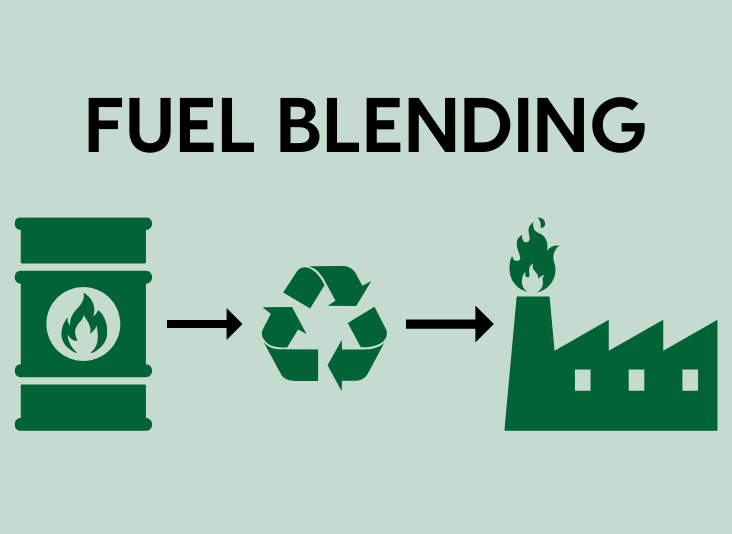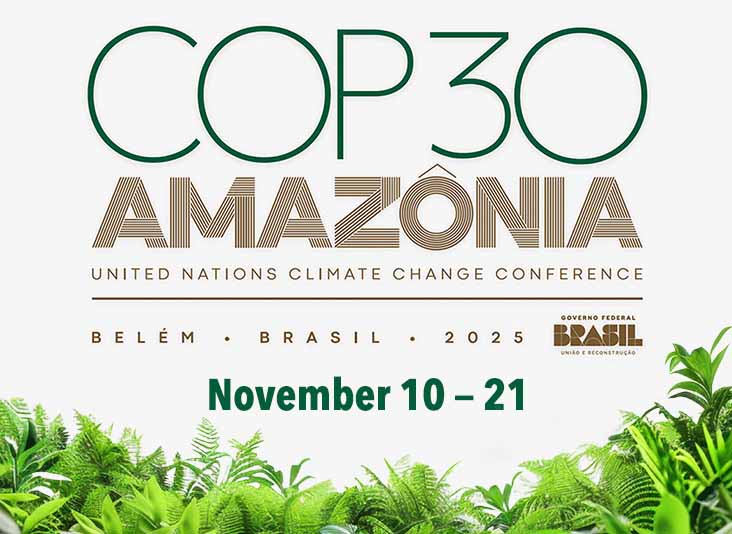From Waste to Fuel: 3 Benefits of Fuel Blending for Sustainable Waste Management
As the world becomes increasingly conscious of the impact that human activities have on the environment, the push for operational sustainability is increasing. More and more organizations across industries are seeking ways to minimize their carbon footprint.
Today, organizations that do not prioritize environmentalism in their operations risk noncompliance, loss of market share, diminished brand image, decreased return on investment (ROI), and more, which we have previously explained in greater detail. Waste management is one of the key areas that companies can prioritize to meet sustainability goals, particularly hazardous waste management and disposal—and numerous sustainable options, including fuel blending, exist.
Options for Solvent Waste Disposal
Hazardous wastes, specifically solvents, are difficult to dispose of. Finding an efficient and safe disposal strategy can be hard enough; finding an efficient, safe, and sustainable disposal option can feel impossible. Often, traditional disposal approaches may be safe, but may not be the most sustainable. With limited options, it can be difficult and costly for hazardous waste generators to find a system that checks all the boxes for a generator’s specific needs. We will discuss some of the benefits and downsides to three traditional disposal options below.
Incineration
Solvent waste can be incinerated. This process involves feeding material into a high-temperature combustion chamber. For liquid and gaseous wastes, the material is volatized and products from this process are either sent for secondary incineration or to air pollution control systems like scrubbers. The resulting ash is collected and disposed of in landfills. This can be an appealing and safe option for hazardous waste disposal; the high heat of the combustion chamber destroys harmful compounds found in the disposed material, leaving behind inert waste that can be sent to a landfill. Incineration is an energy-intensive process and, if done incorrectly or inefficiently, can pollute the environment. On top of this, throughout this process, material is lost and can't be reclaimed for reuse. As such, this may not always be the most sustainable option for solvent waste disposal.
Solvent Recovery
Solvent recovery as a process involves the distillation of spent waste solvents to be recovered and resold on the open market. This method is fairly sustainable because mixed solvent wastes can be separated and purified to desired concentrations for reuse. The desired chemical makeup of waste that is suitable for this technology can be quite narrow, however, because you need a solvent waste that is able to be easily separated. Fuel blending, which we go into more detail about below, can process a much wider variety of waste.
Fuel Blending
The term “fuel blending” describes the recycling of solvent wastes—the process of combining two or more fuels that would otherwise be considered waste. In doing so, a new substance is created that has specific characteristics and properties that make it ideal to use as fuel for other processes. This treatment process can provide abundant benefits and is one of the most sustainable options for waste management.
Fuel blending helps solve the issues presented by other hazardous waste management options. It deals with solvent waste in an efficient, safe, and sustainable way. This process can be tricky, however, as different types of waste have different chemical properties and physical characteristics that may affect the end-product and its subsequent use; it takes knowledgeable experts to properly manage a fuel blending program.
Benefits of Fuel Blending
Regardless of the end-use of the “recycled” fuel, solvent waste recycling provides numerous benefits. At a large scale, fuel blending can help companies reach their sustainability goals, through a few different venues—we will explore more of these in detail below.
One: Product Life Extension
By recycling a material destined for disposal, its life can be extended beyond its original capacity. A product may no longer meet manufacturer specifications once used—but this does not diminish the potential energy stored within it. Fuel blending can help realize this potential energy for solvent wastes, creating a valuable product that can then be sold for use as an alternative fuel in energy production.
Two: Sustainable Energy Source
In 2022, the US consumed 79.05 quadrillion BTUs of energy derived from fossil fuels, a number of near unfathomable proportions. The use of traditional fossil fuels, such as coal or oil, can have a significant impact on the environment—especially at the scale in which we use them.
The main environmental impact of fossil fuel use is that this process releases CO2 into the atmosphere, which contributes to global climate change, local human health concerns, and sea level rise, among other concerns. On top of their use in processes, fossil fuels require external energy input throughout their entire life cycle. The process of mining, refining, and transporting these fuels all contribute to their detrimental impact on the environment.
Fuel blending reduces these concerns, as it eliminates industry dependence on fossil fuels and the environmental damage they cause. The solvent materials that are created via fuel blending are better for the environment than regular fuels. Unlike oil, fuel blended materials don't require the environmentally-costly steps of front end discovery and extraction. When compared to coal, reprocessed solvent materials are "cleaner" and do less environmental damage.
Three: Reduced Environmental Impact
Overall, fuel blending reduces the environmental impact of hazardous waste disposal. This disposal strategy reduces both upstream and downstream environmental impacts of waste disposal. Instead of extracting and refining oil, fuels are reused and given a second life. Instead of usable fuels simple being disposed of, energy is captured and used to power other processes. This helps support a more closed-loop system and a more circular economy.
This not only helps conserve finite natural resources, but also reduces the amount of pollution that is generated by traditional waste disposal methods. Companies can reduce their reliance on traditional fossil fuels and promote a more sustainable future by adopting the use of alternative fuels, created via fuel blending processes.
Get Onboard with Fuel Blending
Fuel blending is a viable and important component of hazardous waste management—and one that you can take advantage of with minimal effect on your operations. Triumvirate Environmental offers fuel blending services, turning flammable solvent waste into combustible fuel that can be used as energy in various industries. Bringing in an expert like Triumvirate Environmental to evaluate all of your waste options can give you a step up in terms of reaching your sustainability goals.
Interested in learning more about fuel blending or getting started recycling your hazardous wastes? Triumvirate Environmental offers numerous options for sustainable waste management—contact us today to learn more about all our options, including fuel blending.






